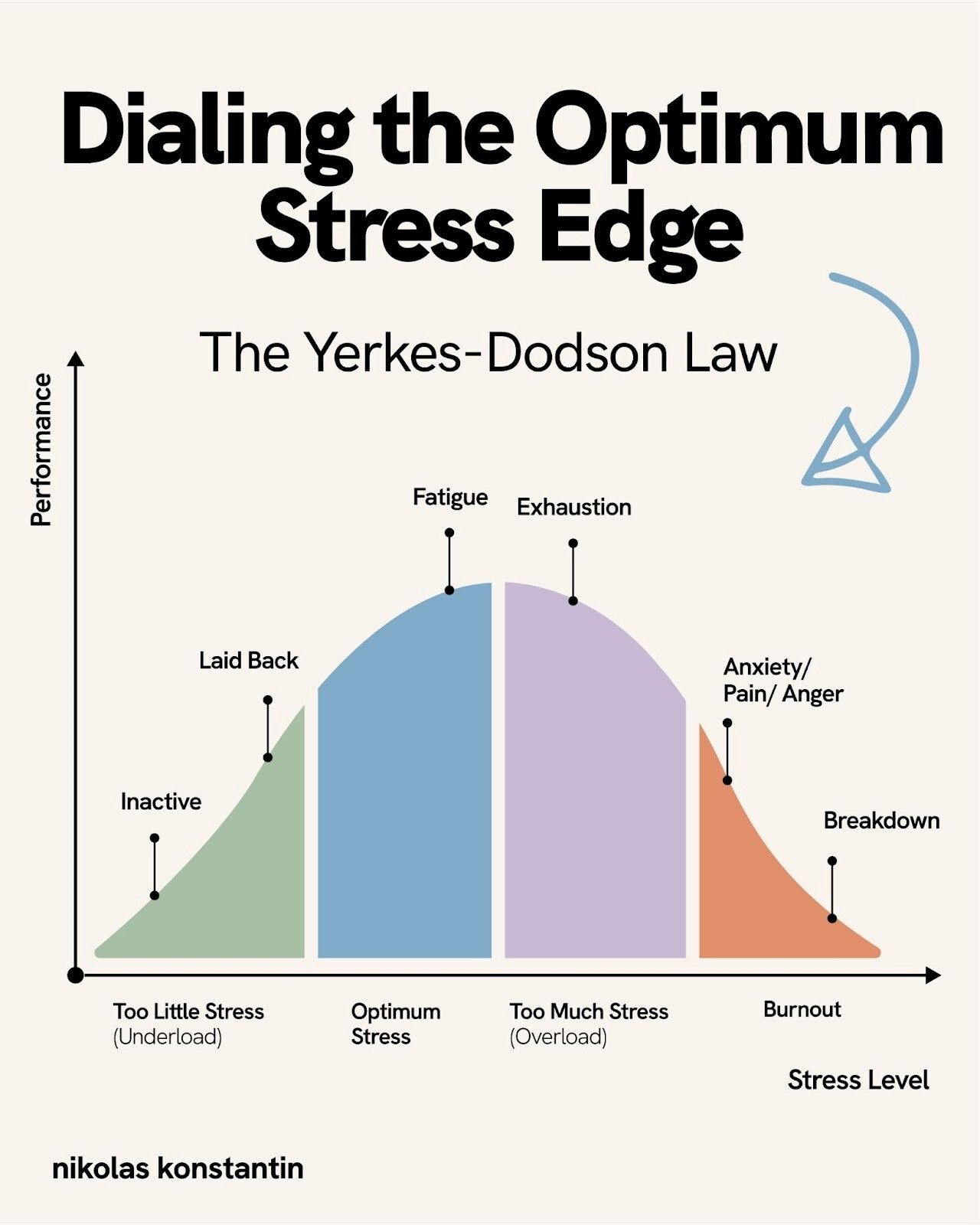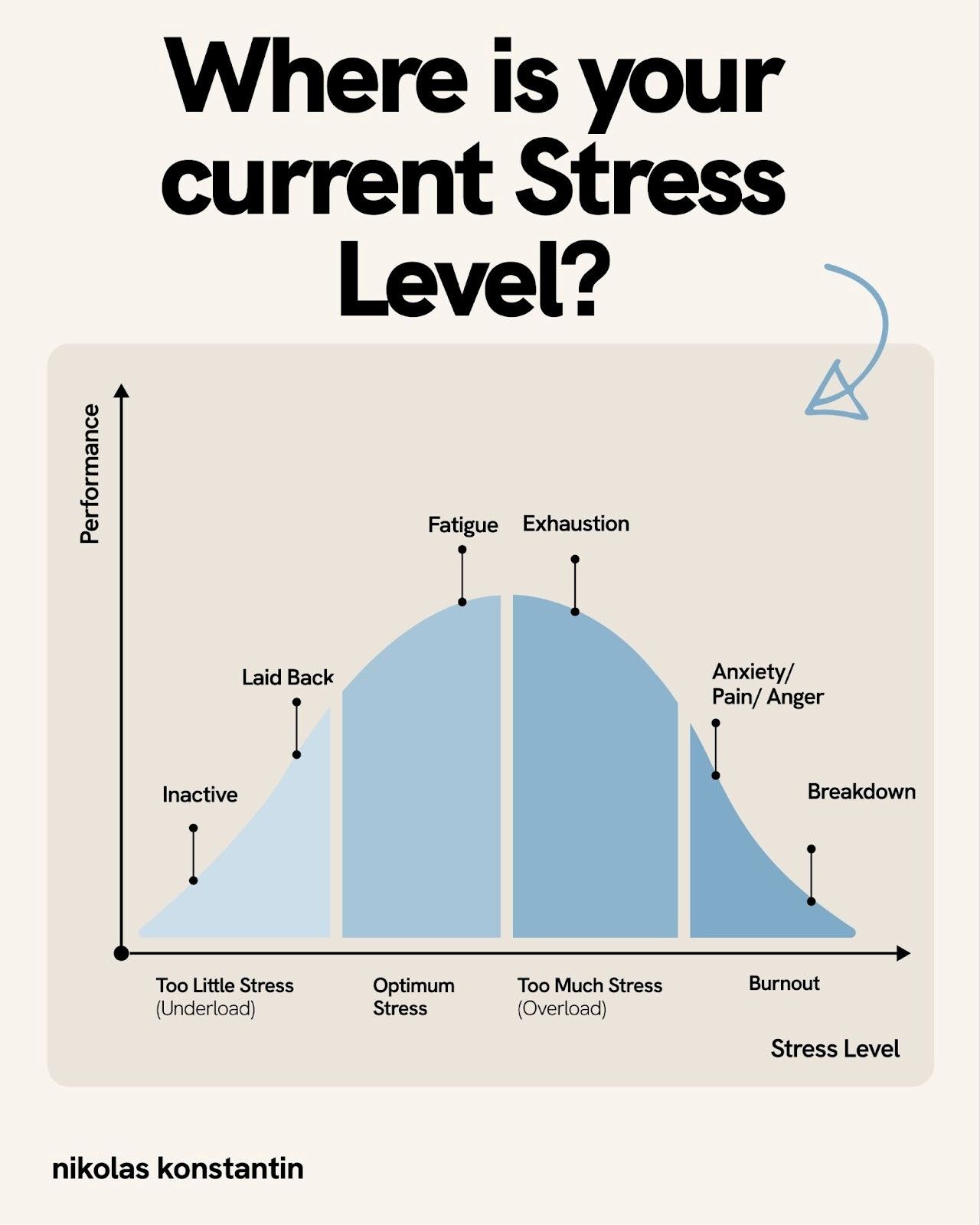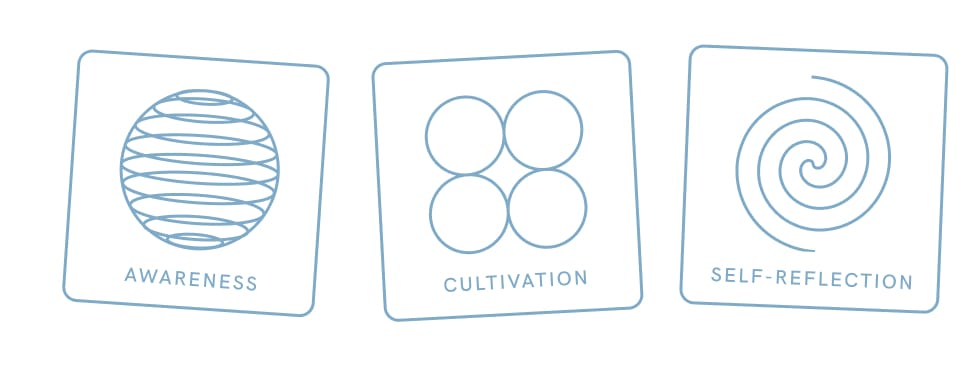- The Mindful CEO
- Posts
- How to move from Fighting Stress to Designing it
How to move from Fighting Stress to Designing it
How I Help Leaders Find the Stress Sweet Spot
We should know better:
After 100+ years of research, we know stress follows the "Yerkes-Dodson curve", aka. the stress curve.

The stress curve, is an inverted U where performance peaks at moderate arousal levels, then crashes under overload.
Stress is a spectrum, not something bad: But despite the scientific evidence I still hear people either moaning about "stress", or bragging about "pushing the limits".
Seems like this field, like so many others, does not really enjoy nuance:
You either hate stress, or you wear it like a badge of honor.
This black and white thinking wont get you far: If you want to play the long game, you need to be smarter.
When I work with leaders, we retire “stress is good” and we dig a grave for “stress is the enemy”.
And we move to what really matters when you want to be a high performer:
Designing stress to meet your needs.

Lets start with how I do this:
Step One : Unlearning
Get rid of the stress is either "good" or "bad" dichotomy.
Its not about removing stress.
Instead, it's about dialing in the right stress edge.
The reality?
Your performance depends on finding your stress sweet spot.
Step Two: Upskilling
Study the 4 Stress Zones. Learn to locate yourself and how you feel:
🥱 Under-Stimulation Zone: Endless meetings, quiet quitting, innovation drought
⚡ Optimal Zone (Eustress): Flow states, rapid learning, healthy debate
🔥 Overload Zone: Decision paralysis, team conflicts, 2 AM Slack messages
💔 Burnout Zone: Cynicism, errors spike, LinkedIn profiles get updated
Knowing the stress zones, you can make the Strategic Shift:

Step Three: From Stress Management to Stress Design
Now that you know the four levels of stress, you can move from reacting to stress. You can now intentionally calibrate it:
Match challenge to skill level - Stretch goals with adequate support
Build in recovery rhythms - Think sprints, not marathons
Track leading indicators - Heart rate variability, voluntary overtime, team sentiment
Reframe stress as energy - "This pressure means we're pushing boundaries"
These three steps will help you sustain high performance without burning your wires.

Start with yourself first. Leading yourself matters.
Then apply those lessons to your organization.
Organizations that master stress as a design variable will outperform those that treat it as an unfortunate side effect.
Where do you currently sit on the performance curve?
Let me know if it helps.
Wish you a great week,
Nikolas
P.S. Leading is hard.
Here is how I can support you to lead yourself and your organization:
A la Carte Executive Training:
Each year, I support selected leaders & their organizations in transforming into more resonant versions of themselves. Want to be coached by me? Apply hello.
The Yearly Reflection Space for Leaders:
A 10-month cohort experience blending modern leadership with timeless wisdom for visionary founders and CEOs. Apply here.
A Beautiful Mind for Executives:
My virtual “A Beautiful Mind Meditation Course” for Executives. Train here.
The CEO Playbook Library:
My CEO Playbooks library features the best management and leadership theory. Exclusive access here.

Three Pillars of Wise Leadership
PPS: And because you deserve it - here is your bonus.
My 10 “Most Popular Mini Leadership Guides”:

Thanks for reading.
Did you enjoy this mail?
Is there a topic you want to read?
Would you like to see anything changed?
Just reply to this mail. I will get back to you.
Enjoy the newsletter?
Please forward this to a pal. It only takes 18 seconds. Making this one took 12 hours.
See you next Monday,

